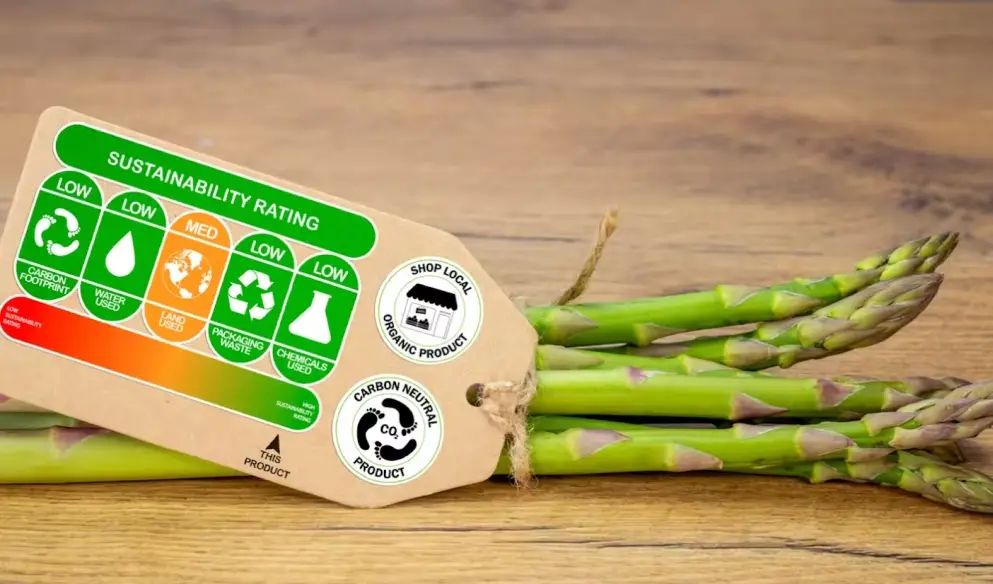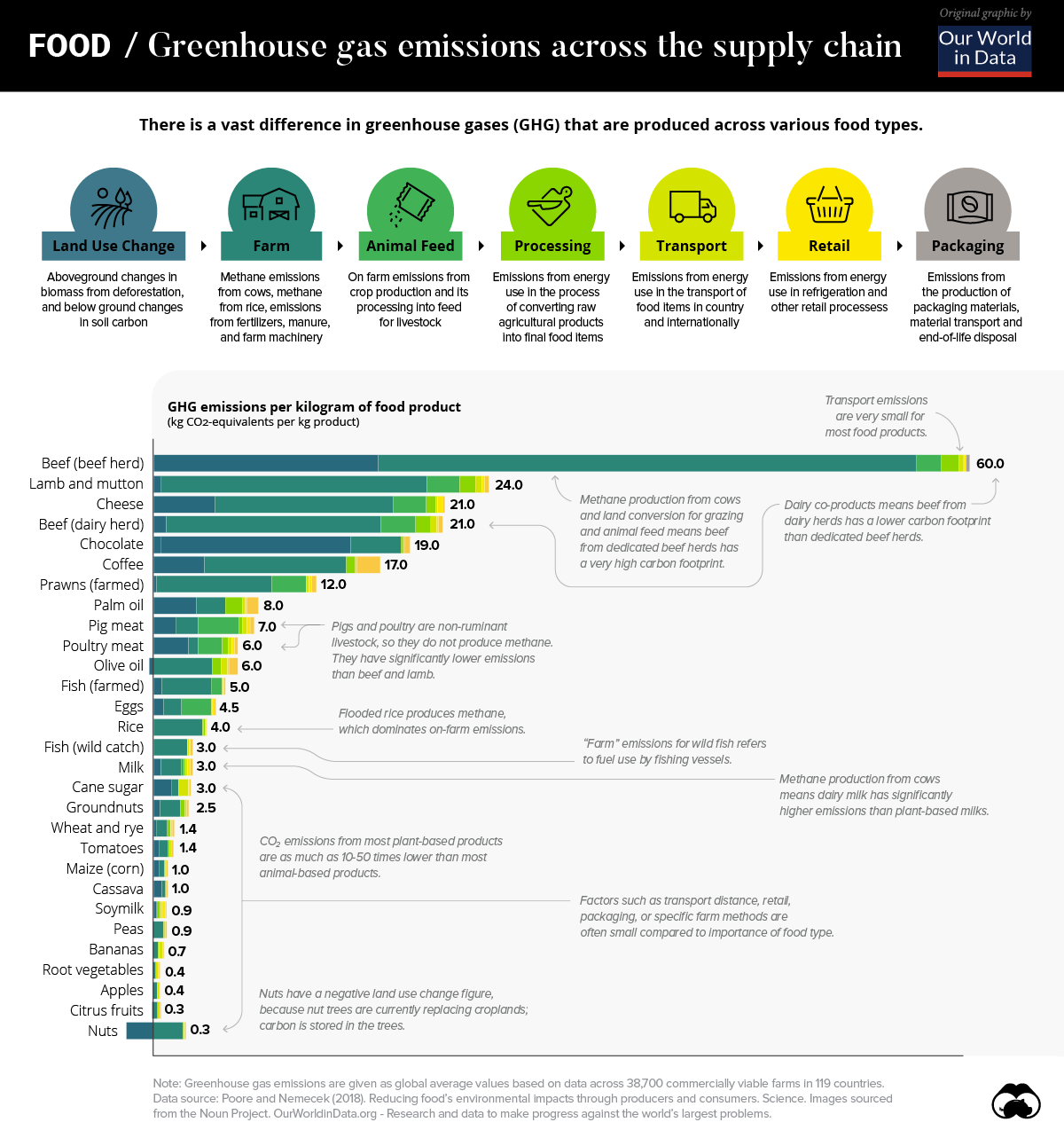Restaurants and food companies are increasingly experimenting with carbon labels on menus to inform customers about the climate impact of their food.
The food system is a major contributor to global greenhouse gas emissions – roughly one-quarter to one-third of all emissions – with recent research showing that animal-based foods produce about twice the emissions of plant-based ones.
Carbon friendly labeling customers to choose more climate-friendly foods in a restaurant (particularly among return customers). https://t.co/BORzp3kvM6 pic.twitter.com/fZAHsRN51D
— Thomas Talhelm (@ThomasTalhelm) October 6, 2023
By labeling menu items with their carbon footprint or climate impact, businesses aim to nudge consumers toward more sustainable choices and reduce food-related emissions.
Early Adopters of Menu Carbon Labeling
One of the pioneers in this space was fast-casual chain Just Salad. In 2020, Just Salad announced it would display the carbon footprint of every item on its menu, making it the first US restaurant chain to do so.
The rollout was timed for Climate Week NYC in late 2020, with carbon labels added to online menus and in-store boards. This bold move garnered national attention as an industry milestone in transparency around food sustainability.
Other brands have since followed suit – for example, Panera Bread partnered with the World Resources Institute (WRI) to launch “Cool Food Meals” labels on low-carbon dishes, and various European restaurants and caterers are introducing carbon ratings on menus.
Do Carbon Labels Influence Consumer Choices?
Emerging evidence suggests that providing climate impact information can indeed shift consumer behavior. A study by the World Resources Institute tested the effect of adding different sustainability messages to restaurant menus.
In an online experiment with over 6,000 U.S. participants, researchers found that displaying thoughtfully framed environmental messages on menus significantly increased diners’ selection of lower-carbon, plant-rich dishes.
In fact, the two most effective messages – emphasizing that “small changes can make a big difference” and inviting diners to “join a movement” – doubled the likelihood that a person would choose a vegetarian menu item compared to menus with no such messaging.
These findings suggest that simple promotional cues on menus (such as notes about a dish’s environmental benefit) can be a cost-effective way to encourage more climate-friendly choices.
Another approach is labeling the items directly with their climate impact. Research published in the JAMA Network Open medical journal examined how adding climate labels to a fast-food menu affected orders. In a randomized trial, over 5,000 U.S. adults were shown sample menus that either had:
- a green low-carbon label on chicken, fish, or vegetarian items,
- a red high-carbon “warning” label on beef items, or
- no climate labels (control group).
The results were striking. Menus with a red high climate-impact warning on beef items led to 23% more participants choosing a sustainable (non-red meat) option, compared to the control menu with no labels. Even the positive green labels on low-carbon options yielded a 10% increase in non-beef choices.
According to the study’s authors, adding a prominent climate warning label on high-emission menu items can be an effective strategy to steer consumers toward greener meals. These findings, published in late 2022, highlight that well-designed carbon labels (especially “warning” style labels for high-impact items) can indeed influence people’s orders toward lower-carbon choices.
Emissions from food alone could use up all of our carbon budget for 1.5°C or 2°C.
But we have opportunities to avoid this.
My latest article on @OurWorldInData: https://t.co/qTWclwM2iB pic.twitter.com/019q8qkHIq
— Hannah Ritchie (@_HannahRitchie) June 10, 2021
Design Matters: Lessons from Behavioral Science
While carbon labeling shows promise, it’s not a silver bullet. How the information is presented and integrated into menus makes a difference. Behavioral scientists at Cambridge University tested various interventions on food-delivery app menus to see what best reduces the carbon footprint of users’ orders.
Their 2024 study found that simply adding a carbon footprint label next to each item had relatively minimal impact on choices. However, reordering the menu – listing low-emission dishes and restaurants first – had a much bigger effect.
By defaulting users to see the most climate-friendly options at the top, the average meal’s carbon footprint fell by about 12% per order.
In other words, changing the choice architecture (the layout and ordering of menu items) significantly nudged people toward greener selections, whereas a label alone did not change behavior as much.
These findings, reported by Cambridge researchers, suggest that carbon labels may work best in combination with smart menu design. Restaurants can consider pairing carbon labels with tactics like highlighting low-carbon dishes prominently or making the default choice a sustainable one, to maximize impact on customer decisions.
Looking Ahead
Carbon labels on menus are an evolving tool in the effort to promote sustainable dining. Early adopters like Just Salad proved it’s feasible to calculate and display carbon footprints for menu items, and many others in the industry are now exploring similar transparency.
Consumers are increasingly climate-conscious, and clear labeling can meet the growing demand for information about how food choices affect the planet.
At the same time, research indicates that the effectiveness of carbon labels can depend on their format and context – a simple icon next to an item may help, but a well-framed message or strategic menu layout can make the encouragement far more potent.
As more restaurants, cafeterias, and food apps experiment with climate labeling, they will need to apply insights from these early studies to design labels that truly drive change.
When done thoughtfully, menu carbon labels, alongside other nudges, offer a promising avenue to empower diners to opt for lower-carbon meals and help shrink the carbon footprint of our food system.


